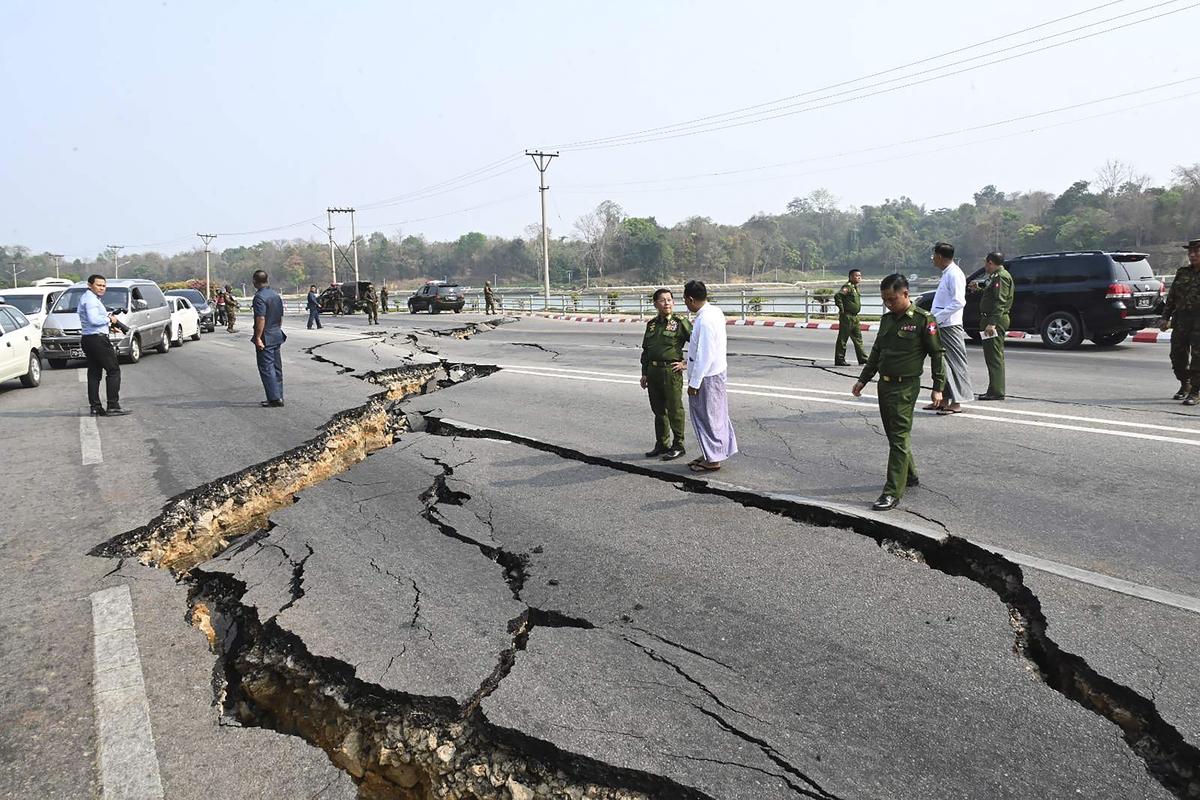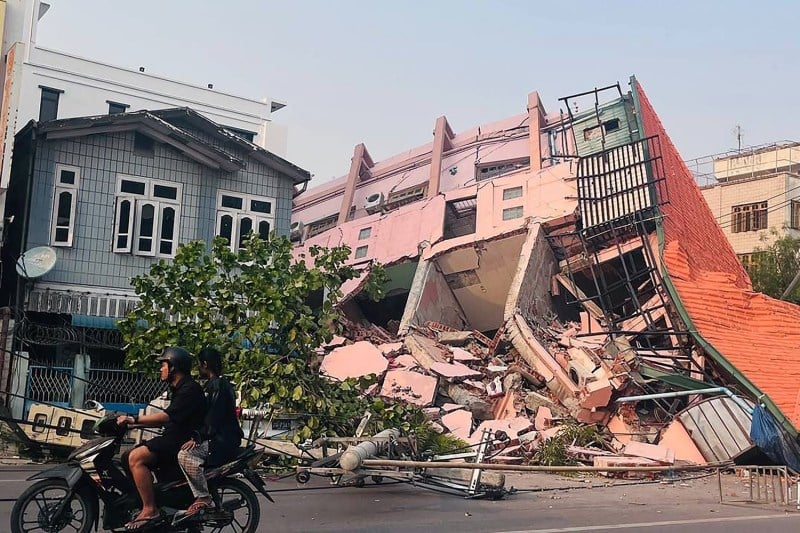Myanmar Earthquake
On March 28, 2025, at approximately 12:50 p.m. local time, a powerful magnitude 7.7 earthquake struck central Myanmar, with its epicenter near Mandalay, the nation’s second-largest city. The quake, one of the most severe to hit the region in over a century, resulted in widespread devastation across Myanmar and neighboring countries, including Thailand.

Impact and Casualties
The earthquake caused extensive damage throughout Myanmar, particularly affecting cities like Mandalay and the capital, Naypyidaw. As of March 31, the death toll has surpassed 1,700, with over 3,400 injuries and more than 300 individuals reported missing. In Thailand, at least 18 fatalities have been confirmed, primarily due to building collapses in Bangkok. The tremors were felt as far as southwestern China, India, and Vietnam, highlighting the earthquake’s vast reach.
Structural Damage
The earthquake inflicted severe damage on infrastructure. In Mandalay, numerous buildings, including hotels and residential complexes, collapsed. A notable incident involved the Great Wall Hotel, where a woman was rescued after being trapped under rubble for 60 hours. In Bangkok, a skyscraper under construction collapsed, resulting in multiple casualties and highlighting the earthquake’s far-reaching impact.
Rescue and Relief Efforts
Rescue operations have been challenging due to damaged infrastructure, communication disruptions, and ongoing civil conflict in Myanmar. Local communities have been at the forefront of initial rescue efforts, often using limited resources. International aid has been mobilized, with countries such as China, Russia, India, and the United States providing assistance. However, the complex political landscape in Myanmar has posed challenges for aid distribution, with concerns about ensuring that assistance reaches those most in need.
Geological Context
Myanmar is situated along the Sagaing Fault, a major tectonic boundary between the Burma and Sunda plates. This fault has a history of significant seismic activity, with previous notable earthquakes occurring in 1930 and 1946. The 2025 earthquake involved a rupture of approximately 200 kilometers along this fault, releasing substantial energy and causing intense ground shaking.

Human Stories
Amid the devastation, stories of survival and loss have emerged. Mut Naung, a survivor from Mandalay, recounted being trapped in the collapsed Great Wall Hotel for five hours, using her phone’s light to navigate the darkness. Tragically, many of her friends and colleagues did not survive. Such personal accounts underscore the profound human impact of the disaster.
International Response
The international community has responded with offers of aid and support. The United States has pledged $2 million in assistance, while the International Federation of Red Cross and Red Crescent Societies has launched an emergency appeal. Despite these efforts, challenges remain in delivering aid effectively due to damaged infrastructure and the political situation in Myanmar.
Ongoing Challenges
The earthquake has compounded existing challenges in Myanmar, a nation already grappling with political instability and civil conflict. The destruction of healthcare facilities has further strained the country’s ability to respond to the crisis, with urgent needs for medical supplies and personnel. Additionally, the displacement of thousands has raised concerns about shelter, sanitation, and the potential for disease outbreaks.
As the situation evolves, continued international support and effective coordination will be crucial in addressing both immediate needs and long-term recovery efforts for the affected communities in Myanmar and neighboring regions.